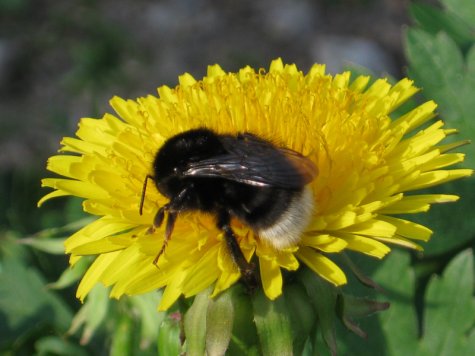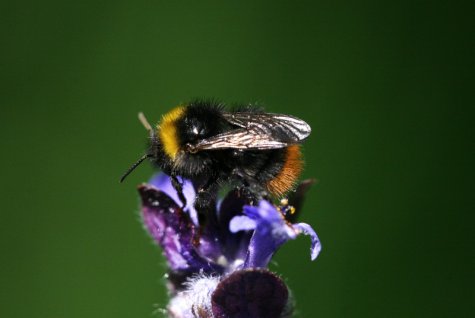Year of the Bumblebees
2014
Broken-belted bumblebee and early bumblebee
Text: Eha Kruus
Photos: Evelii Viik and Riho Marja
Translation: Liis
Broken-belted bumblebee
Early bumblebee
Broken-belted bumblebee Sorokimalane Bombus soroeensis
Early bumblebee Niidukimalane Bombus pratorum
There is a great number of different common names in the languages of Europe for the little broken-belted bumblebee, B. sorooensis. The Latin species name, sorooensis (and from this also its Estonian name, sorokimalane) is derived from the little town of Soro (Sorö in Danish), situated in Sjælland in East Denmark, where Carl Linnaeus’s pupil, the Danish zoologist Fabricius, found this species for the first time. The other small species, B. pratorum, has unanimously been given names meaning meadow or heath bumblebee (‘pratus’ in Latin – meadow, hayfield) in the mainland countries of Europe. Only the English call it the early bumblebee, because it is a species who ends its summer season quite early although in a favourable year it produces two generations.
The broken-belted bumblebee is the most variable species in Estonia, whose two subspecies on cross-breeding yield a great number of pattern combinations. Thus identifying this species can be quite complicated. On the second segment of the abdomen of the white-tailed subspecies B. soroeensis soroeensis there is usually a discontinuous yellow band, a broken belt. Typically there are enough yellow hairs to form a curved line on the sides of the previous black band. Workers of this subspecies are sometimes described as small white-tailed bumblebees with a particularly bright lemon yellow colour. The basic colour of the red-tailed subspecies B. soroeensis proteus is black due to which it can be confused with the red-tailed bumblebee (B. lapidarius). Fortunately the most abundant variety in Estonia (also the specimen that served as basis for the species description) is the clearly recognisable black-white form – the melanistic variety of the basic species. Between the black band and the white tip on the abdomen of the broken-belted bumblebee there may be a reddish line, sometimes very narrow sometimes however broader, reminding of the red tail of the early bumblebee (B. pratorum). Unmistakeably, we can identify a black-white specimen with a yellow band running across the chest in front of the wings as a broken-belted bumblebee; on the back the band is only visible as two “epaulettes”.
In spring and early summer we recognize the early bumblebee (B. pratorum) from its red abdomen and yellow collar. On the thorax and abdomen different band combinations may occur, and towards the end of summer it can be confused with the males of black-red species. Females usually have yellow bands on the thorax front side, locally also on its rear or on the abdomen. On the first and second segment of the abdomen a yellow band occurs primarily on males.
Thus the individual colouration of these two species may vary so much that identification by way of pattern sometimes turns out to be quite difficult.
Join the „Meie kimalased – Our bumblebees” group on Facebook: LINK
and share your pictures of the bumblebees in your garden with other enthusiasts!










